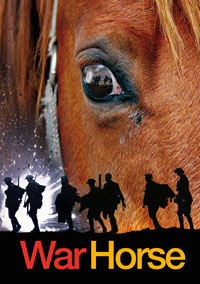1º BACHILLERATO
CONTENTS
LITERATURA. TEXTOS
|
SOCIEDAD Y CULTURA
|
|
TERM 1
|
The Short Story: analysis.
“Button Button” (Richard Matheson)
“The Sniper”(Liam O´Flaherty)
Ernest Hemingway: There is nothing worse than
war (A Farewell to Arms)
Unabridged reader: War Horse (M.
Morpurgo)
|
World War I
|
TERM 2
|
Unabridge reader: 20th C Stories: “Millie”, “Lamb to the Slaughter”, “The Gift
of the Maggi”, “A Rose for Emily”
Unabridged reader – a play: An
Inspector Calls (Jason Priestly)
|
The vote for women
Women´s history month
|
TERM 3
|
Steinbeck and the Great Depression.
Reader: Of Mice and Men
|
The US in the 20s and 30s.
|
LANGUAGE CONTENTS
The linguistic contents this year will be based on the title:
GATEWAY 2ND EDITION - LEVEL B2+ (only text book)
GRADE BREAKDOWN
- Use of English: 25%
- Reading comprehension: 15%
- Writing: 15%
- Listening: 10%
- Speaking: 10%
- Literature, culture. Readers: 25%
Evaluating instruments:
- Use of English + reading comprehension: Text book tests per unit plus one final term test.
- Writing, listening and speaking: Average of all class grades / tests.
- Literature, culture. Readers: Average of all grades on different classroom activities.
----------------------------------------------------------------------------------------------------------------
READING TASK
For each of the short stories you will have an individual writing task .
The evaluation of this activity will take into account both the comprehension of the story and the written expression of the answers.
When writing your answer, follow the model: "POINT-EVIDENCE-EXPLAIN"(see link for vocabulary, also provided in class). All your answers need to be supported with evidence from the text, or with inferences from what is stated in the text:
- Explicit textual evidence:
- State your idea (restating the question)
- Cite what in the text led you to that idea: Give supporting evidence from the text (paraphrasing or quoting).
- Explain your evidence.
- Making inferences (something that you think is true based on information that you have). In fiction writing, sometimes we have to "read between lines" to understand what the author wants to say without saying.
These writing prompts must be typed in MLA format and should include at least one piece of evidence (in the form of a properly cited quote) from each story: (Citing textual evidence)
Below you will find the prompt for each of the required stories. Each of these writing prompts are designed to help you analyze the story and better understand the themes and messages the author conveys.
"BUTTON, BUTTON" (Richard Matheson)
"LAMB TO THE SLAUGHTER" (Roald Dahl)
"THE SNIPER" (Liam O´Flaherty)
"THE GIFT OF THE MAGI" (O. Henry)
"BUTTON, BUTTON" (Richard Matheson)
Overall, what might the box in this story symbolize? Explain your answer.
"LAMB TO THE SLAUGHTER" (Roald Dahl)
"THE SNIPER" (Liam O´Flaherty)
"THE GIFT OF THE MAGI" (O. Henry)
Essay:
Usually,
an author’s theme can be stated in terms that resemble familiar sayings or
proverbs. Look at the following
statements.
– Love is the greatest gift of
all.
– Money can’t buy you love.
– A gift must come from the
heart.
– Beauty comes from within.
Use
text evidence to answer the following question in an essay: Which of the four sayings best describes the
main theme of The Gift of the Magi?
Why?
_____________________________________
EXTENSIVE READING TERM I
WAR HORSE (MICHAE MORPURGO)
CHAPTERS COMPREHENSION QUESTIONS:
CHAPTERS 1-4
CHAPTERS 5-8
CHAPTERS 9-12
CHAPTERS 13-14
CHAPTERS 15-16
CHAPTERS 17-18
CHAPTERS 19-20-21
THE HISTORICAL CONTEXT :WORLD WAR I
ERNEST HEMINGWAY: A FAREWELL TO ARMS
There is nothing worse than war
Historical context
Historical context
SUFFRAGETTES MOVEMENT
Women´s Suffrage Movement (Presentation)
____________________________________________
SECOND TERM
READING TASKS FOR TERM II:
AN INSPECTOR CALLS (text)(J.B. PRIESTLY)
Background / Cultural Context
•
John
Priestley was born in Bradford born in 1894 and died in 1984. He served as a
soldier in WW1 and was a socialist – he believed that the British ‘community’
(people living together) should not be dominated by the rich and powerful
(capitalists)
•
Priestley
wanted the poor to have a stronger place within the community
•
The
play is set before the war.
The play is about, amongst many
things, social responsibility. Priestley uses the play to present his
ideas on responsibility and society. He frequently uses the character of the Inspector as a mouth-piece
for his ideas. For example the
Inspector exclaims ‘We are members of one
body. We are responsible for each other’.
Priestley is suggesting that we
should all look after one another, and that those who have power over others should use it for
the common good, not just for their own benefit. It is fairly clear by the end
of the play that these are Priestley’s views.
ACTIVITIES BASED ON THE PLAY
1.
Know what
is going on. Produce a summary of each Act . Include what happens and when it
happens and also why it’s important. (Each Act should be summarized in about 100 words)
2.
Know who is
who. Eva/Daisy, Sheila, Eric, Gerald, Mrs Birling and Mr Birling. Even Edna. What do they all
represent? Write 5 bullet points for
each character (personality/appearance/role in the play) and find 3 (minimum)
key quotes for them.
3.
Be clear on
the themes. There are lots of themes explored in this play. Choose three themes which you think are important and write about each of them in 100 words. Include: Why you think this theme is important in the play, how the theme connects with the historical context at the time, and quotes from the character that reflect that theme.
-------------------------------------------------------------------------------
THIRD TERM
Click on the title to access the pdf of the book. You can also buy it online here
